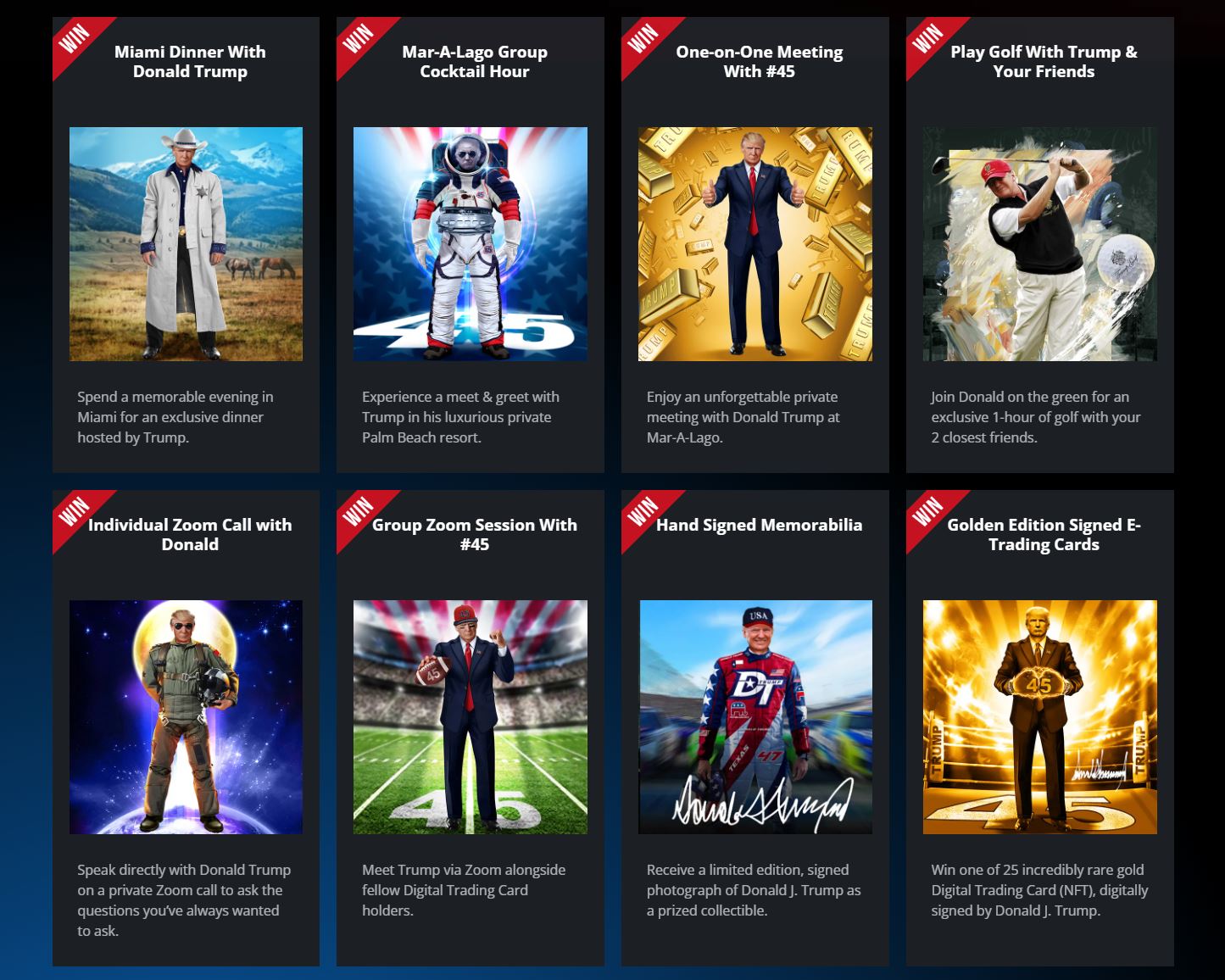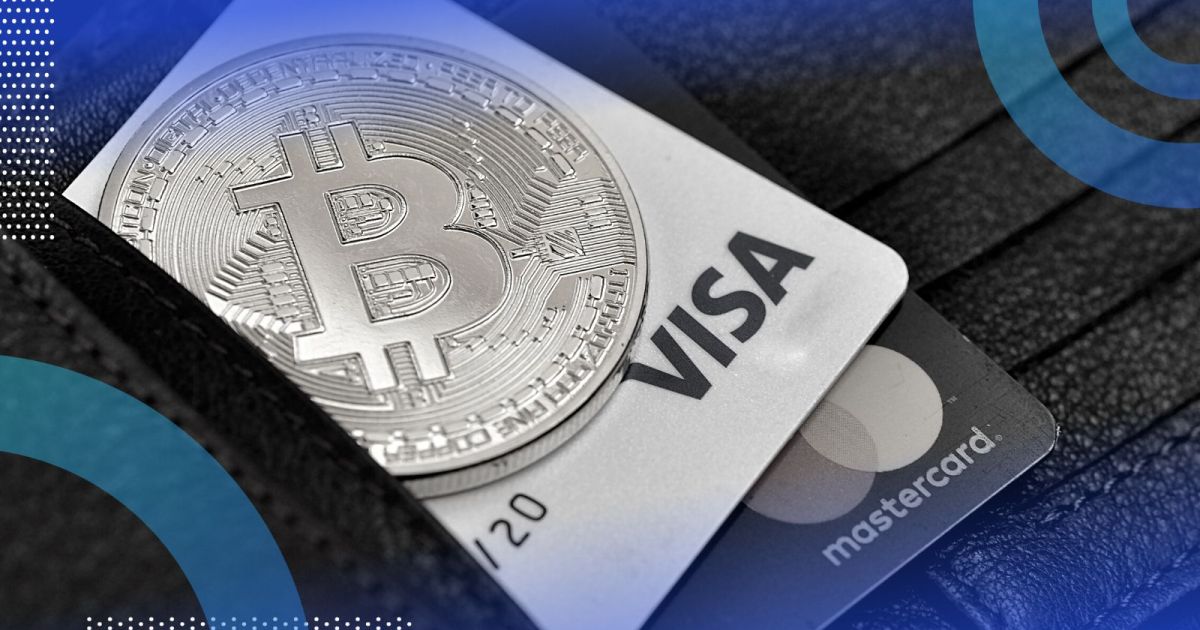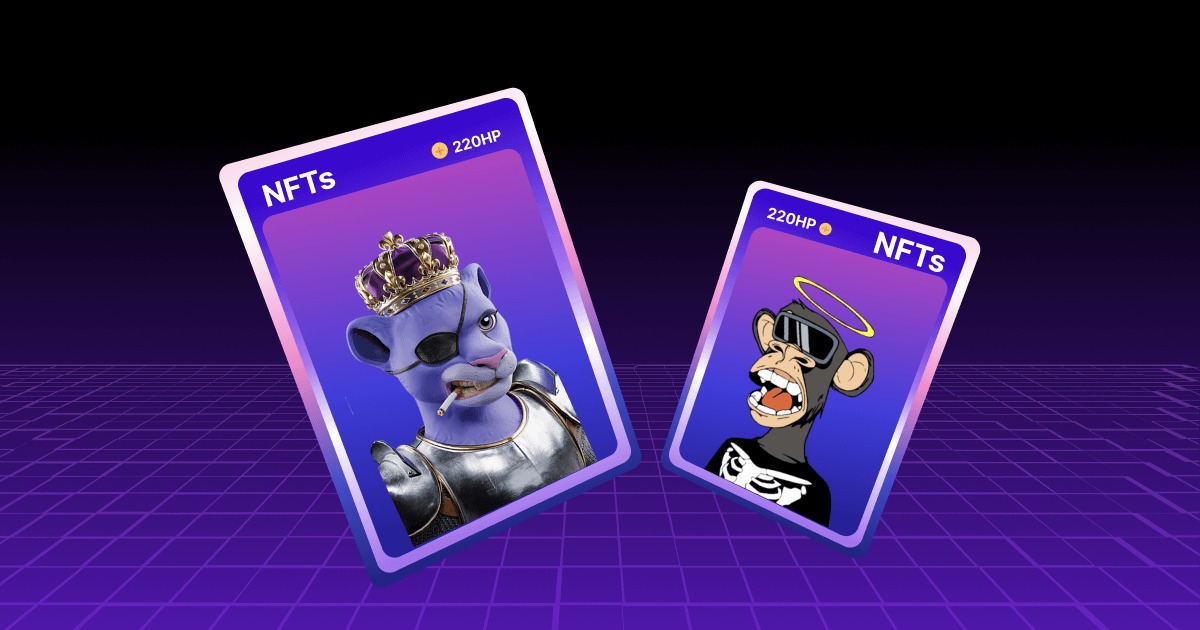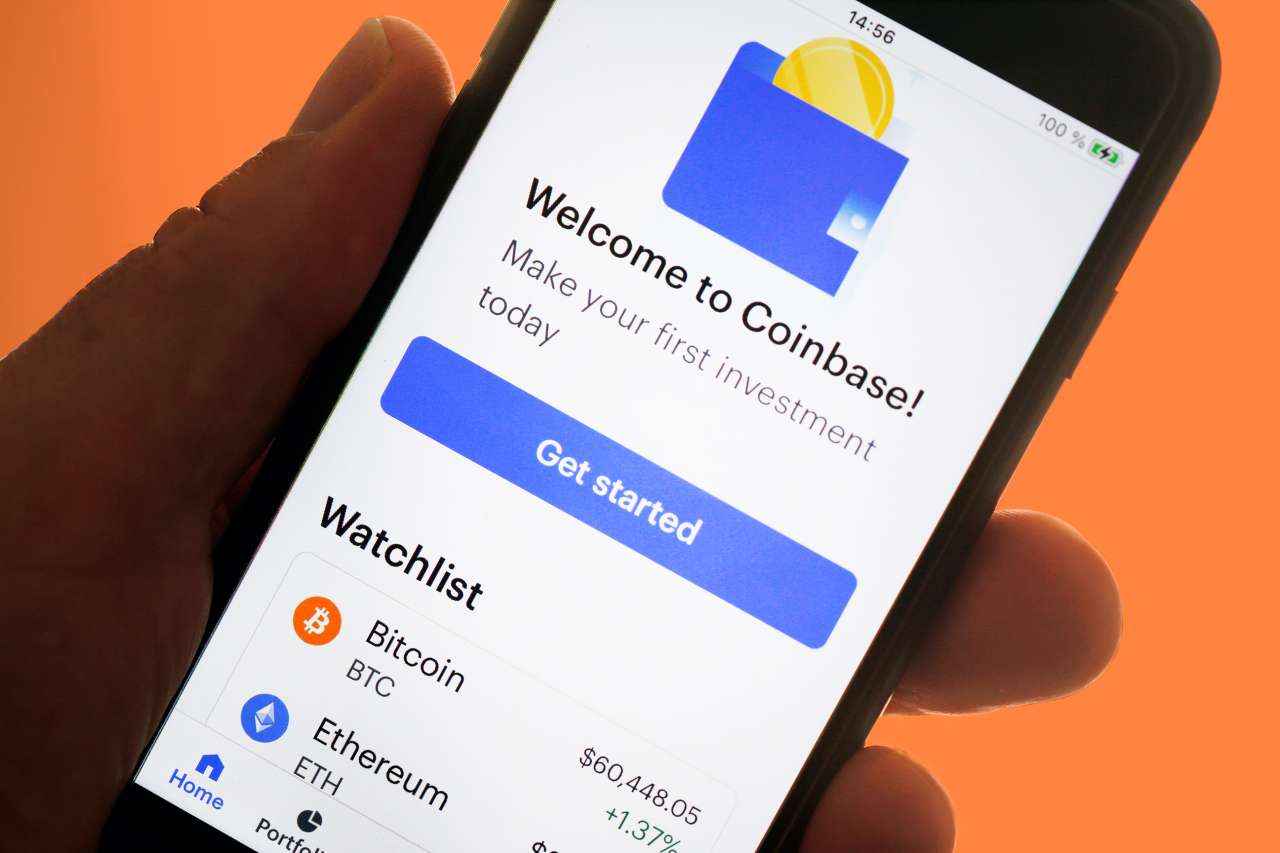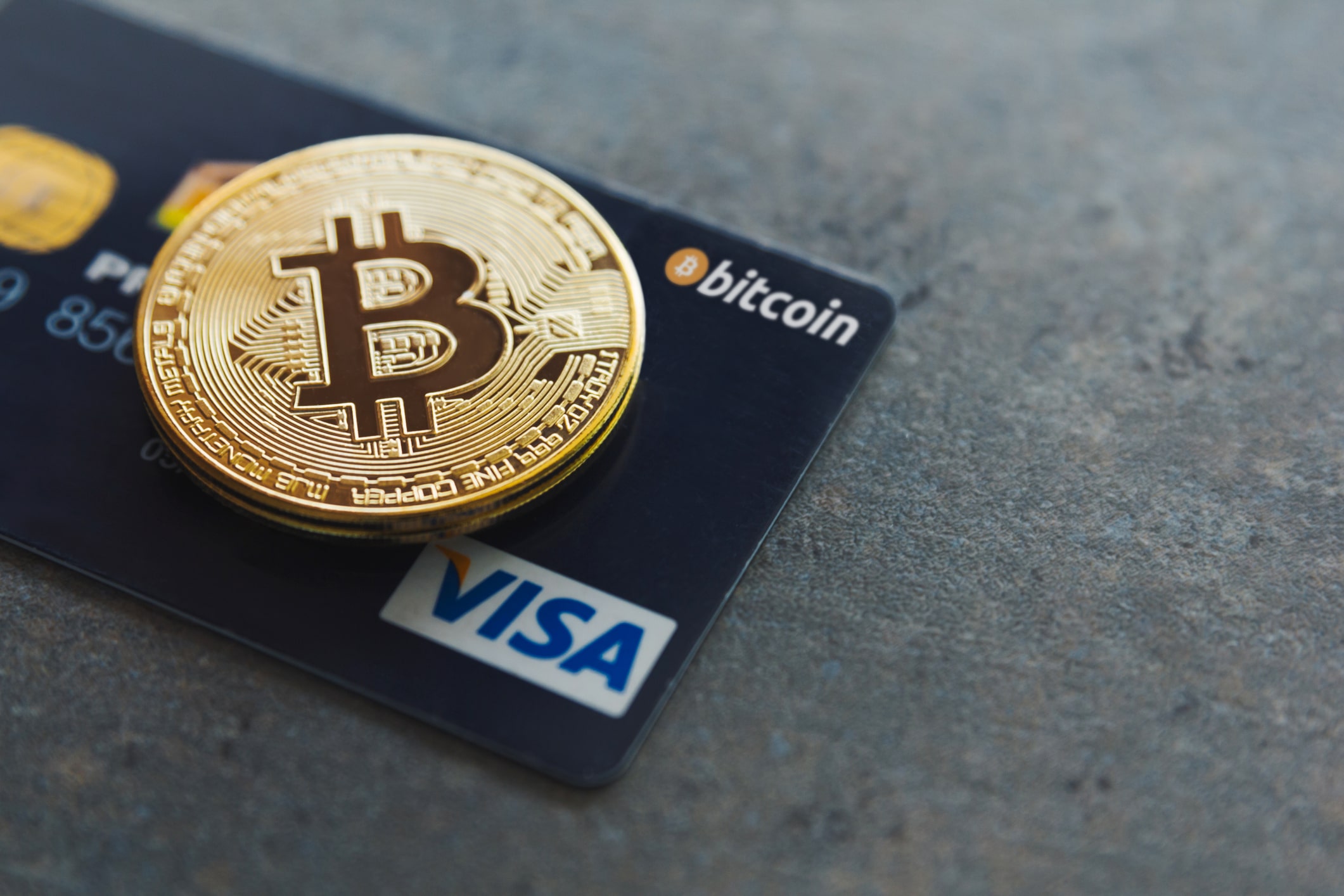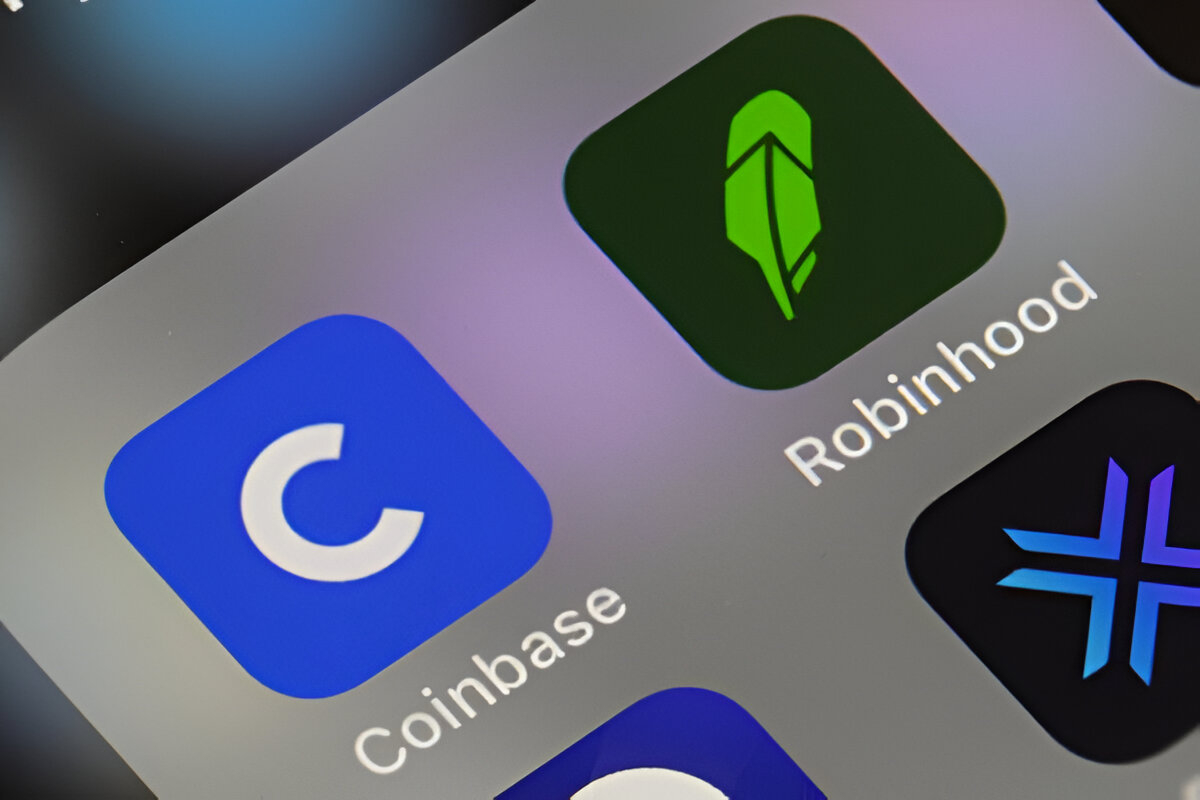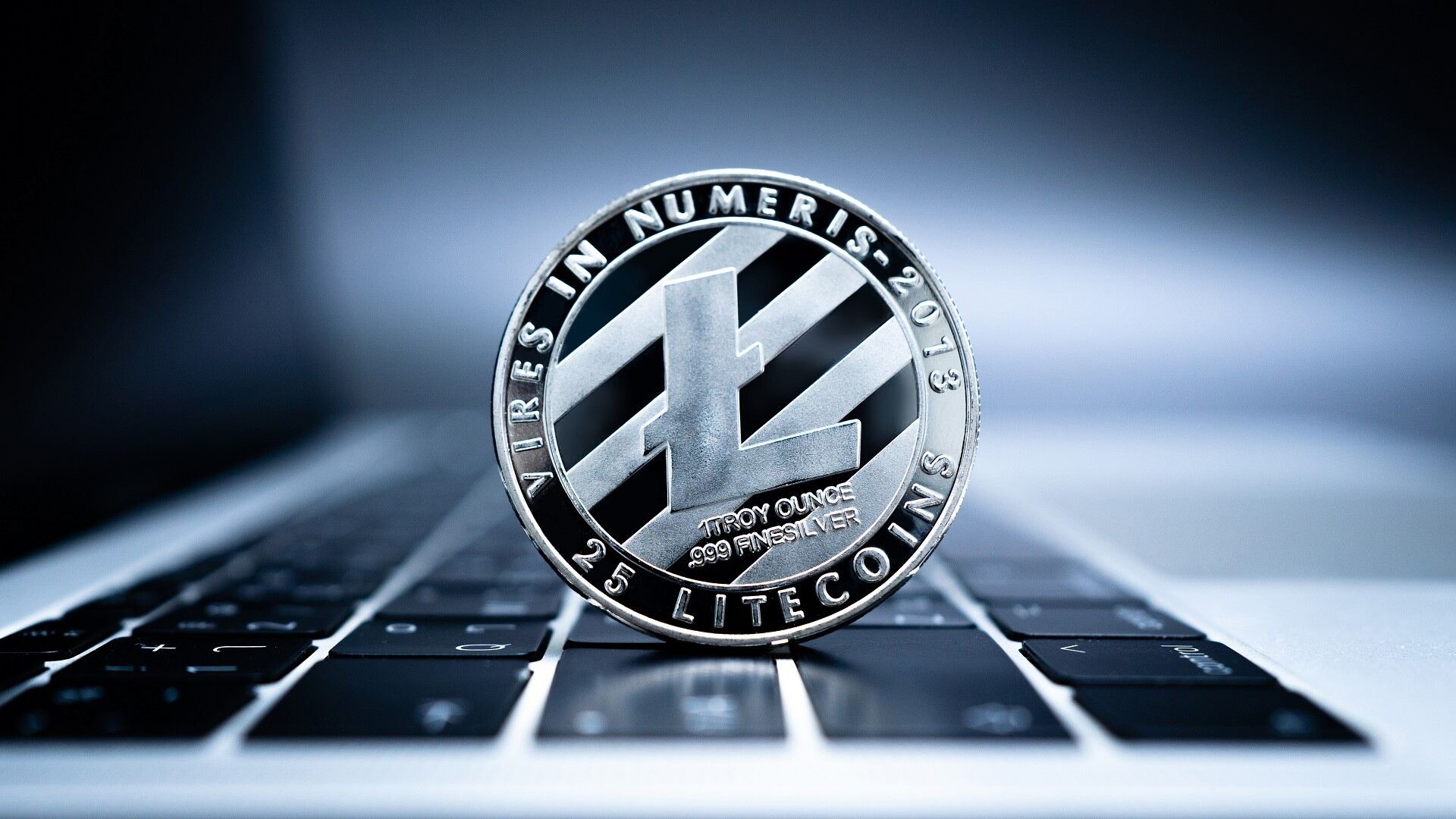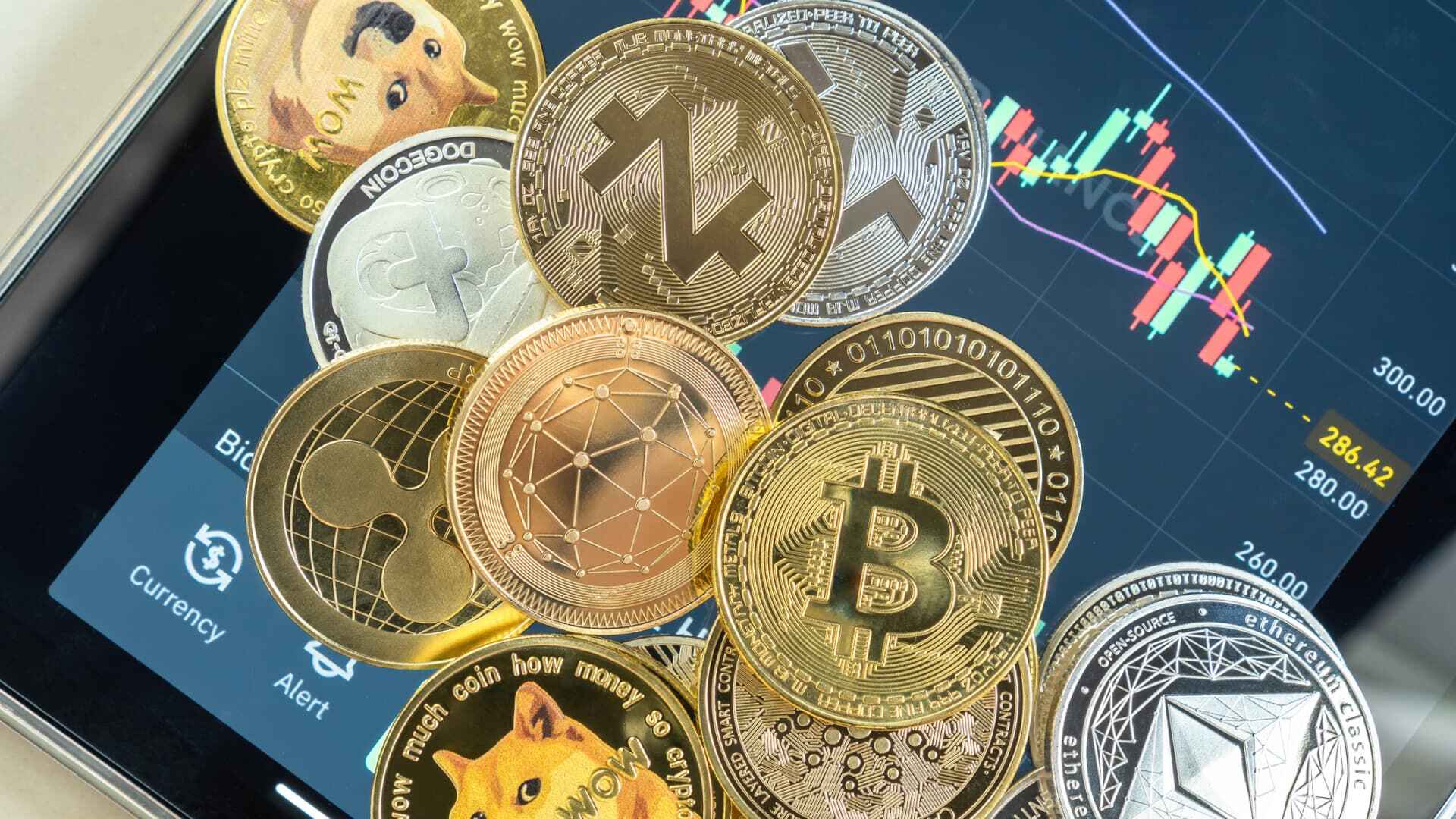Introduction
Digital trading cards have revolutionized the way we collect and trade our favorite cards. Gone are the days of physical cards stored in binders or shoeboxes. With the advent of technology and the internet, digital trading cards have risen in popularity, offering collectors a whole new world of possibilities.
But what exactly are digital trading cards? Simply put, digital trading cards are digital representations of physical trading cards. They can be collected, bought, sold, and traded online through various platforms and apps. These digital cards come in various formats, often including images, animations, and even audio or video elements.
The concept of digital trading cards is not entirely new. It has roots in the world of video games, where players could collect virtual cards representing characters, items, or abilities. However, the rise of blockchain technology and non-fungible tokens (NFTs) has taken digital trading cards to a whole new level, offering unique ownership and scarcity to collectors.
For collectors, digital trading cards offer a plethora of advantages. They provide a convenient way to organize and display their collections without the need for physical storage. Additionally, digital cards can often be accessed and traded from anywhere in the world, allowing collectors to connect with a global community of like-minded enthusiasts.
However, like any form of collecting, there are also disadvantages to consider. Some collectors argue that the lack of physicality takes away from the experience of collecting. Additionally, digital trading cards may require an initial investment to get started, as well as ongoing costs for purchasing new cards or participating in trading events.
In this article, we will delve deeper into the world of digital trading cards. We will explore their history, discuss the differences between digital and physical cards, highlight the benefits and drawbacks of digital collecting, and provide tips for those interested in starting their own digital trading card collection. So, strap in and get ready to dive into the exciting realm of digital trading cards!
Definition of Digital Trading Cards
Digital trading cards, also known as e-trading cards or virtual trading cards, are digital representations of collectible cards that can be accessed, collected, bought, sold, and traded online. These cards exist in digital formats and are typically stored and managed through specialized platforms or mobile apps.
Similar to traditional physical trading cards, digital trading cards feature various themes, including sports, entertainment, gaming, and more. They often showcase images of athletes, celebrities, characters, or artwork, capturing the essence of the original physical card.
Digital trading cards offer a dynamic experience compared to their physical counterparts. They are not limited to static images and text; they can include animations, sound effects, video clips, augmented reality (AR) elements, and other interactive features. This interactive multimedia aspect adds an extra layer of excitement and engagement for collectors.
One of the defining characteristics of digital trading cards is their integration with blockchain technology and the use of non-fungible tokens (NFTs). NFTs provide a unique digital identity and ownership to each card, ensuring the authenticity, scarcity, and traceability of the digital collectibles.
With digital trading cards, collectors have the ability to showcase their collections in a virtual gallery, trade cards with other collectors worldwide, participate in auctions or sales, and even play games or engage in challenges using their digital cards.
The value of digital trading cards can vary greatly depending on factors such as rarity, popularity, condition, and demand. Some cards may hold significant monetary value, especially if they are part of limited editions or feature iconic individuals or moments.
Overall, digital trading cards offer a modern twist on traditional collecting hobbies. They provide collectors with the convenience of digital storage, the interactivity of multimedia elements, and the excitement of an evolving and interconnected community.
History of Digital Trading Cards
The history of digital trading cards can be traced back to the early days of online gaming and virtual collectibles. In the late 1990s and early 2000s, video game companies started introducing the concept of collecting virtual cards within their games.
One of the pioneers of digital trading cards was the Pokémon Trading Card Game Online, which launched in 2002. This online adaptation of the popular physical trading card game allowed players to collect and trade virtual cards, battling against each other in digital tournaments.
As technology advanced, more trading card games followed suit, offering digital versions of their physical cards. These digital games expanded beyond just Pokémon, including popular franchises like Yu-Gi-Oh!, Magic: The Gathering, and Hearthstone.
With the rise of mobile devices and smartphones, digital trading card games became more accessible than ever. Mobile apps like Cardfight!! Vanguard EX, Gwent: The Witcher Card Game, and Shadowverse gained popularity, attracting both new and experienced collectors.
However, the concept of non-fungible tokens (NFTs) and blockchain technology truly revolutionized the world of digital trading cards. In 2017, the launch of CryptoKitties, an NFT-based virtual cat collectible game, brought attention to the potential of blockchain for digital collectibles.
Since then, numerous blockchain-based platforms have emerged, enabling the creation and trading of digital trading cards as non-fungible tokens. These platforms, such as NBA Top Shot, Gods Unchained, and CryptoPunks, have gained massive popularity, with collectors actively participating in the buying, selling, and trading of unique digital cards.
The integration of blockchain technology ensures the authenticity and scarcity of digital trading cards. Each card is minted as a unique token on the blockchain, providing proof of ownership and traceability. This has opened up new possibilities for collectors, as digital cards can now hold intrinsic value and be considered digital assets.
The history of digital trading cards showcases the evolution and adaptation of the collecting hobby to the digital age. From simple virtual cards in online games to blockchain-powered NFTs, digital trading cards continue to push the boundaries of what is possible in the world of collecting.
How Are Digital Trading Cards Different from Physical Trading Cards?
Digital trading cards and physical trading cards may share a common purpose of collecting and trading, but they differ in several fundamental aspects. Understanding these differences is crucial for collectors to navigate the world of digital trading cards effectively.
One of the primary distinctions between digital and physical trading cards is the tangible nature. Physical trading cards are physical objects made of paper or cardboard, whereas digital trading cards exist in a digital format that can be accessed and viewed on electronic devices.
This difference in medium gives digital trading cards some unique advantages. Digital cards don’t require physical storage space, eliminating the need for binders or sleeves. They can be conveniently stored and organized in virtual collections, accessible from anywhere with an internet connection.
Another significant difference is the interactivity and multimedia elements found in digital trading cards. Unlike physical cards, digital cards can incorporate animations, sound effects, video clips, and augmented reality (AR) elements. This added interactivity enhances the collector’s experience by bringing the cards to life.
Ownership and authenticity are also handled differently. Physical trading cards rely on visual analysis and external grading services to determine their condition and authenticity. In contrast, digital trading cards utilize blockchain technology and non-fungible tokens (NFTs) to ensure unique ownership and proof of authenticity.
Rarity and scarcity take on new meanings in the world of digital trading cards. Physical cards often have limited print runs and editions, but digital cards can have programmatically determined scarcity. With blockchain technology, the number of copies or editions of a particular digital card can be explicitly defined and enforced.
The marketplaces and platforms for buying, selling, and trading digital trading cards also differ from physical cards. Physical cards are typically traded through physical card shops, conventions, or online marketplaces. In contrast, digital trading cards have dedicated online platforms and apps that facilitate the buying, selling, and trading of digital collectibles. These platforms provide global access to collectors, connecting them with a broader community.
Lastly, the value of digital trading cards is determined by a combination of factors such as rarity, demand, condition, and historical significance. While physical cards’ value can fluctuate over time, digital cards’ values are pegged to the market dynamics of the digital collectible ecosystem.
Overall, the differences between digital and physical trading cards extend beyond the medium and encompass aspects such as interactivity, ownership, rarity, marketplaces, and value. Embracing these differences allows collectors to appreciate and navigate the unique and evolving world of digital trading cards.
Types of Digital Trading Cards
Just like physical trading cards, digital trading cards come in various types and themes, appealing to a wide range of collectors. Each type offers unique characteristics and experiences. Let’s explore some of the most popular types of digital trading cards:
- Sports Trading Cards: Sports trading cards are among the most popular types of digital cards. They feature athletes from various sports, including basketball, soccer, baseball, and more. These cards often highlight memorable moments, player statistics, and collectible variations, making them a favorite among sports enthusiasts and collectors.
- Entertainment Trading Cards: Entertainment trading cards focus on popular media franchises such as movies, TV shows, and video games. These cards showcase characters, scenes, or artwork from beloved franchises like Star Wars, Marvel, and Harry Potter. Collectors can explore the worlds of their favorite entertainment properties through these digital cards.
- Gaming Trading Cards: Gaming trading cards are based on digital games and can be found in popular card game apps or platforms like Hearthstone, Magic: The Gathering Arena, and Pokémon Trading Card Game Online. These cards often represent characters, creatures, spells, or items from the games and can be collected, traded, and used in the respective digital card games.
- Artistic Trading Cards: Artistic trading cards focus on showcasing unique and visually stunning artwork. These cards often feature illustrations, paintings, or digital art created by talented artists. Collectors appreciate these cards for their artistic value and the opportunity to support and admire the work of their favorite artists.
- Collectible Fashion Cards: Collectible fashion cards have gained popularity in recent years, featuring iconic fashion styles or collaborations with renowned designers. These cards often highlight fashion items, clothing, or accessories and allow collectors to engage with the fashion world in a unique digital format.
- Comic or Anime Trading Cards: Comic or anime trading cards are targeted towards fans of comic books and anime series. These cards may feature popular characters, dynamic illustrations, or pivotal moments from the stories. Collectors can delve into the worlds of their favorite comics or anime through these digital cards.
These are just a few examples of the types of digital trading cards available. The world of digital collectibles continues to expand, offering an ever-growing variety of themes and experiences for collectors to explore and enjoy.
Benefits of Digital Trading Cards
Collecting digital trading cards offers a wide range of benefits for collectors, making it an appealing and exciting hobby. Let’s explore some of the key benefits of digital trading cards:
- Convenience and Accessibility: One of the major advantages of digital trading cards is the convenience and accessibility they offer. Collectors can access their digital collections from anywhere with an internet connection, eliminating the need for physical storage space and allowing for easy organization and display.
- Interactivity and Multimedia Elements: Digital trading cards go beyond static images. They can incorporate animations, sound effects, video clips, and augmented reality (AR) elements, enhancing the overall collecting experience. This interactivity adds a new dimension of engagement and enjoyment.
- Global Community and Connection: Digital trading cards provide an opportunity to connect with a global community of collectors. Through online platforms and apps, collectors can interact, trade, and engage in discussions with fellow enthusiasts from around the world, expanding their networks and sharing their passion.
- Unique Ownership and Authenticity: Digital trading cards utilize blockchain technology and non-fungible tokens (NFTs), providing collectors with unique ownership and proof of authenticity. The decentralized nature of the blockchain ensures that the ownership and transaction history of each card are transparent and secure.
- Dynamic Market and Value: The digital trading card market is constantly evolving, presenting opportunities for collectors to discover new cards, participate in events, and engage in trading. The value of digital trading cards can also fluctuate based on factors like rarity, demand, and the overall ecosystem of the digital collectibles market.
- Interconnected Experiences: Digital trading cards often come with integrated gameplay or additional features that allow collectors to use their cards in virtual battles, challenges, or games. This interconnected experience adds a layer of excitement and enjoyment, blurring the boundaries between collecting and gaming.
These benefits make digital trading cards an appealing choice for collectors seeking convenience, interactivity, community connection, and unique ownership. The digital format opens up new possibilities and experiences that add an extra level of enjoyment to the collecting journey.
Disadvantages of Digital Trading Cards
While there are numerous benefits to collecting digital trading cards, it’s important to consider the potential drawbacks as well. Here are a few disadvantages of digital trading cards:
- Lack of Physicality: One of the primary drawbacks for some collectors is the lack of physicality in digital trading cards. Unlike physical cards, which can be held, flipped, and admired, digital cards are intangible, existing solely in a digital format. Some collectors prefer the tactile experience of physical cards.
- Initial Investment: Starting a digital trading card collection often requires an initial investment. Some cards may have a cost associated with acquiring them, especially if they are part of limited editions or offer unique features. Additionally, ongoing costs may arise when purchasing new cards, participating in events, or accessing premium features in digital card platforms.
- Reliance on Technology and Internet: Since digital trading cards exist in a digital format, collectors rely on technology and internet connectivity to access and manage their collections. Technical issues, internet outages, or platform changes can impact the availability and enjoyment of digital cards.
- Dependency on Digital Platforms: Collectors of digital trading cards are dependent on the platforms or apps that host and manage their collections. The longevity and reliability of these platforms can impact the long-term accessibility and availability of digital cards. Changes in ownership, platform shutdowns, or server issues can cause disruptions or even lead to loss of access to collections.
- Perceived Lack of Rarity: While digital cards can be scarce and limited in supply, some collectors argue that the perception of rarity is diminished in the digital realm. Unlike physical cards, which have a physical presence and limited print runs, digital cards can be replicated infinitely. Although blockchain technology and unique tokenization provide proof of ownership and scarcity, the subjective perception of rarity may differ from traditional collecting.
- Potential for Counterfeiting: With the rise of digital trading cards, there is the potential for counterfeit or unauthorized replicas to circulate. While blockchain technology helps establish authenticity, collectors must remain vigilant and ensure they are acquiring genuine digital cards from trusted sources.
It’s important for collectors to weigh these potential disadvantages against the benefits and personal preferences when deciding whether to pursue digital trading cards as a collecting hobby. While digital trading cards offer unique experiences and advantages, they may not suit every collector’s preferences or collecting goals.
Popular Digital Trading Card Platforms
The digital trading card landscape is filled with various platforms and apps that cater to collectors’ needs and interests. Here are some of the most popular and influential digital trading card platforms:
- NBA Top Shot: NBA Top Shot is a blockchain-based platform where collectors can buy, sell, and trade officially licensed NBA digital trading cards. These cards come in the form of “Moments” capturing highlights from real NBA games, making them highly sought after by basketball fans and collectors alike.
- Pokemon TCG Online: The Pokemon Trading Card Game Online is an official digital adaptation of the popular physical trading card game. It allows collectors to build decks, participate in battles, and trade virtual Pokemon cards with other players. The game offers a seamless integration of the physical and digital card collecting experience.
- Panini Instant: Panini Instant is a platform focused on delivering real-time, on-demand digital trading cards across various sports, including soccer, football, basketball, and more. Collectors can acquire exclusive cards featuring significant events or milestones as they happen, offering a unique and time-sensitive collecting experience.
- Gods Unchained: Gods Unchained is a blockchain-based digital card game where players can collect and battle with unique and rare cards. It offers a play-to-earn model, allowing players to earn rewards by participating in tournaments and events. The game emphasizes strategic gameplay and the ownership of truly scarce and valuable digital cards.
- Marvel Collect! by Topps: Marvel Collect! is an app that allows collectors to collect and trade officially licensed Marvel digital trading cards. It features a wide range of card sets showcasing Marvel characters, comic covers, artwork, and more. Collectors can also participate in set completion challenges and engage with the Marvel community.
- CryptoPunks: While not strictly a trading card platform, CryptoPunks is a notable project in the digital collectibles space. It offers unique and rare 24×24 pixel art characters stored as NFTs on the Ethereum blockchain. Each CryptoPunk is distinct and highly coveted by collectors in the evolving world of digital art and collectibles.
These platforms represent just a fraction of the digital trading card landscape. As the industry continues to grow, new platforms are constantly emerging, offering collectors a diverse range of experiences and collectible themes.
How to Start Collecting Digital Trading Cards
If you’re interested in starting your own digital trading card collection, here are some steps to help you get started:
- Research and Explore: Begin by researching different digital trading card platforms and the types of cards they offer. Explore the themes, communities, and features of each platform to find the one that aligns with your interests.
- Create an Account: Once you’ve chosen a platform, create an account or download the app associated with it. Most platforms will require you to set up an account to access and manage your digital trading cards.
- Educate Yourself: Familiarize yourself with the platform’s mechanics, card acquisition methods, and trading processes. Read the platform’s guides, tutorials, and community forums to grasp the intricacies and nuances of collecting digital trading cards.
- Start Small and Set a Budget: Determine a budget for your digital trading card collection. It’s advisable to start small and gradually expand your collection as you become more comfortable and knowledgeable about the market dynamics and card values.
- Acquire Your First Cards: Explore the available cards on the platform and select the ones you want to add to your collection. Depending on the platform, you may be able to acquire digital cards through packs, marketplaces, auctions, or by participating in events and challenges.
- Connect with the Community: Engage with the community of digital card collectors on the platform. Participate in discussions, ask questions, and seek advice from experienced collectors. Connecting with fellow collectors can enhance your knowledge and enjoyment of the hobby.
- Trade and Expand Your Collection: As you grow your collection, consider trading your duplicate or less desirable cards with other collectors to acquire new cards that interest you. Trading can help you complete sets, obtain rare cards, and connect with other collectors in the community.
- Stay Up to Date: Stay informed about the latest card releases, events, and updates on the platform. Platforms often introduce new card sets, limited editions, or special promotions, and staying up to date will ensure you don’t miss out on any opportunities.
Remember, collecting digital trading cards is a journey that requires patience, research, and ongoing engagement with the community. Enjoy the process of discovering new cards, connecting with like-minded collectors, and building your digital collection.
Tips for Trading and Selling Digital Trading Cards
Trading and selling digital trading cards can be an exciting aspect of the hobby, allowing you to acquire new cards, complete sets, and potentially even make some profit. Here are some tips to help you navigate the world of trading and selling digital trading cards:
- Research Card Values: Before engaging in trading or selling, research and understand the value of the cards you own or wish to acquire. Factors such as rarity, demand, and card condition can impact their worth. Stay informed about current market trends and prices to make informed decisions.
- Build a Reputation: Establishing a positive reputation within the digital trading card community is important. Maintain open and honest communication, follow through with your trades and sales promptly, and resolve any issues in a fair and amicable manner. A good reputation can lead to more successful trades and sales in the future.
- Participate in Trading Communities: Join trading communities or forums specific to the digital trading card platform you are using. Engage with other collectors, discuss potential trades, and showcase the cards you are willing to trade or sell. Active participation in the community can increase your visibility and trading opportunities.
- Be Mindful of Scams: Unfortunately, scams can occur in the digital trading card space. Be cautious when engaging in high-value trades or sales with unfamiliar individuals. Verify the reputation and credibility of the individuals you are dealing with, and use trusted escrow services or platforms when necessary to ensure secure transactions.
- Price Your Cards Fairly: When selling your digital trading cards, make sure to price them fairly based on their value and market conditions. Consider factors such as card rarity, demand, and current listings. Setting a fair price increases the chances of a successful sale and helps maintain a healthy trading environment.
- Consider Trading Up: Trading up involves exchanging multiple lower-value cards for a higher-value card. This strategy can help you acquire more valuable or desirable cards without having to spend additional money. Look for opportunities where you can trade multiple cards from your collection to obtain a single card of higher value.
- Follow Trading Etiquette: Adhere to common trading etiquette, such as clearly communicating your trade offers, responding promptly, and double-checking the cards being traded. Respect the preferences and guidelines set by the individuals you are trading with, and be open to negotiation, ensuring a positive trading experience for both parties involved.
- Track Your Collection: Keep track of the cards in your collection, including their values and any changes in market conditions. This will help you make informed decisions when trading or selling, ensuring that you don’t inadvertently part with valuable cards or miss out on potential trading opportunities.
By following these tips, you can navigate the world of digital trading card trading and selling more effectively. Remember to stay informed, maintain a positive reputation, and enjoy the process of expanding your collection through engaging in transactions with fellow collectors.
The Future of Digital Trading Cards
The world of digital trading cards continues to evolve and shows no signs of slowing down. As technology advances and the demand for digital collectibles grows, the future of digital trading cards looks promising. Here are some trends and possibilities that could shape the future of this exciting hobby:
- NFT Integration: Non-fungible tokens (NFTs) have already made a significant impact on the digital collectibles space. In the future, we can expect to see further integration of NFTs into digital trading cards, providing collectors with enhanced ownership, provenance, and the ability to freely trade and sell their cards on various marketplaces in a decentralized manner.
- Interconnected Ecosystems: Digital trading cards may become part of larger interconnected ecosystems, allowing collectors to use their cards across multiple platforms and games. We might see cross-platform compatibility, where cards collected in one app or game can be utilized or transferred to another, creating a seamless experience for collectors.
- Enhanced Interactivity: As technology advances, the interactivity of digital trading cards is expected to increase. We can anticipate more immersive and engaging experiences, with cards featuring augmented reality (AR) elements, virtual reality (VR) integrations, and interactive gameplay functionalities that go beyond simple animations and sound effects.
- Digital-Physical Integration: With the rise of technologies like augmented reality (AR) and near field communication (NFC), we may see further integration between physical and digital trading cards. This could involve scanning physical cards to unlock digital counterparts or digital experiences, bridging the gap between the tangible attributes of physical cards and the dynamic possibilities of the digital realm.
- Collaborations and Crossovers: Digital trading cards have already showcased collaborations between various franchises and entertainment properties. In the future, we may see more exciting collaborations and crossovers between different industries, such as music, fashion, and movies, creating unique and desirable digital trading card collectibles that appeal to a broader range of collectors.
- Inclusion of Artificial Intelligence: The integration of artificial intelligence (AI) could bring new dimensions to digital trading cards. We may witness AI-generated cards, where the artwork, abilities, or characteristics of the cards are dynamically created by AI algorithms, providing collectors with truly unique and ever-evolving digital cards.
- Environmental Considerations: Digital trading cards offer a more environmentally friendly alternative to traditional physical cards, which require paper, printing, and transportation. As sustainability becomes increasingly important, digital trading cards may gain more traction as collectors seek to reduce their carbon footprint while indulging in their collecting hobbies.
The future of digital trading cards is full of exciting possibilities. As technological advancements continue and collectors’ interests evolve, we can expect innovative features, new collaborations, and an ever-expanding digital collectibles landscape, allowing collectors to engage in a dynamic, interconnected, and immersive collecting experience.







